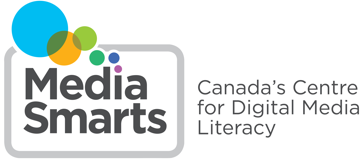Resources for families and educators staying home during COVID-19
We’ve put together some of our best resources to help you and your family manage during these uncertain times.

We’ve put together some of our best resources to help you and your family manage during these uncertain times.


For nearly thirty years, Canadian teachers have been at the forefront of getting students online and preparing them to use networked technologies safely, productively and responsibly. Many young Canadians have their first experiences with the internet in their classrooms and school libraries. Over the past decade, though, while digital tools have come to provide new opportunities for creating and distributing digital content, MediaSmarts’ research shows that most Canadian teachers aren’t making media in the classroom.

Parents could be forgiven for thinking that our children are born media literate. Kids take to digital devices like the proverbial ducks to water, quickly becoming expert at finding the videos and games they want, and it’s a rare baby shower that doesn’t feature Elsa or Elmo in one form or another.

This lesson series contains discussion topics and extension activities for teachers to integrate the TVOKids Original series Wacky Media Songs. This lesson focuses on how media are made, how different media and genres tell stories and communicate meaning, and the affordances and defaults of different networked media.

Level: Grade K to 3
About the author: Matthew Johnson, Director of Education, MediaSmarts
Duration: 10-15 minutes per activity

This lesson is part of USE, UNDERSTAND & ENGAGE: A Digital Media Literacy Framework for Canadian Schools.
Overview

Level: Grade K to 3
About the Author: Matthew Johnson, Director of Education, MediaSmarts.
Duration: 10-15 minutes per activity

This lesson is part of USE, UNDERSTAND & ENGAGE: A Digital Media Literacy Framework for Canadian Schools.

Level: Grade K to 3
About the Author: Matthew Johnson, Director of Education, MediaSmarts
Duration: 10-15 minutes per activity

This lesson is part of USE, UNDERSTAND & ENGAGE: A Digital Media Literacy Framework for Canadian Schools.

This opening video to the Key Concepts of Media Literacy video series introduces students to the idea that the word media – which they may already know in the sense of the media industry (“the media”) – means channels of communication between a person or persons and their intended audience.

In this lesson, students compare print and TV ads for the same product and discuss the advantages and disadvantages of each medium to communicate a particular message. The class then brainstorms a public service message and discusses which medium would be a better way to communicate it and why.

In this lesson, students are introduced to Earth Day and the theme of “Green Cities”. After listening to a short presentation on the concept of a “green city” and elements that constitute a green city (e.g. renewable energy sources such as solar panels, more energy-efficient buildings, recycling programs, cleaner air and water) students participate in an activity where they count the number of parks on a map of their city or neighbourhood. Maps are then analyzed as a medium as students discuss how they are created, things they can and can’t show, and their effectiveness at communicating environmental information.
